I grimace, hold my breath and force the barrel
to close. “Shitter is full!” I call to the group. It’s day 10 of our 26-day Grand Canyon tandem canoe trip. I just filled our second olive barrel to maximum capacity. Much to the glee of each paddler’s inner child, the most common question we were asked when planning the first-ever known self-support tandem canoe trip down the Grand Canyon was regarding the technicalities of pooping. As a national park with over 30,000 river users per year, Grand Canyon river trippers have to pack everything out.
Everything.
Eighteen months after the idea of a Grand Canyon trip landed in my imagination courtesy of my friend Caleb, I won a permit. The launch date was just two months away, on December 30, 2019. It was last minute, but we put down the deposit and started calling friends.
We gathered fellow Black Feather guides Rob and Margaret, as well as whitewater paddlers Ayden, Christian, Alex and Jérôme. Between us, the group had seven certified Wilderness First Responders, one emergency room nurse, two ski patrollers, two river rescue instructors, four canoe instructors and two whitewater kayakers. We all wanted to be paddling, not sitting on a raft. It was only when our research led to dead ends, we realized nobody seems to tandem canoe the Grand Canyon. We’d have to source the equipment and pack the food ourselves.
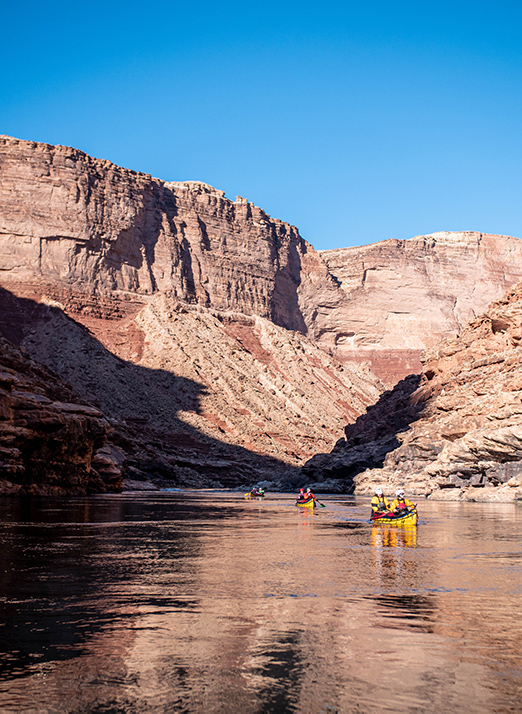
A paddler herself, our boss at Black Feather generously offered to support us with canoes and equipment. With equipment secured, we cooked chili and curry after school well into the night and switched trays on the three dehydrators before work. We discovered despite the nay-sayers online, it was indeed possible to fit 26 days of food in four tandem canoes.
Setting out
After 43 hours of driving in cars so loaded the suspension was non-existent, we set off on the Colorado River in late afternoon. The sun sank behind the humble beginnings of canyon walls, and we turned our headlamps on for the 300-meter float down to our first campsite. Now on the river, the day felt like a success.
“Shotgun first on the toober,” Caleb calls. He disappears into the boulders, claiming the glory of being the first to test out our toilet.
Our system, which is similar to a raft trip’s groover but somewhat more tubular in shape and affectionately called the toober, consisted of eight olive barrels, 312 doggie bags, one PVC pipe and paper bags for toilet paper. The doggie bag gets wrapped over the lip of the pipe, for structure and ease of aim. When business is done, the bag gets removed, knotted tightly, placed into a communal Ziploc bag, and then stored in a garbage bag-lined olive barrel. His head popping up behind the rocks, Caleb declares the system approved and offers it up to the next in line.
Our first morning on the river, packing the canoes is a time-consuming task as each team learns how to balance their boat perfectly. We all fidget drifting in the current, tilting this way and that, getting a feel for the river ahead.
Rounding a bend, the early afternoon sun bounces off the surreal cream-colored water of the Little Colorado River, washing the entire scene in a halo. I tilt my head up, way up to the canyon rim. I squint—somewhere up there is the spot that nearly fed a gondola cable right across my vision.
Grand Canyon Escalade was an entertainment complex proposed on the eastern rim of the Grand Canyon. A gondola was to bring an estimated 10,000 people per day in and out of the canyon at this confluence. In three days, this would have delivered as many tourists to the confluence as an entire year’s worth of river travelers, but the project was canceled in its final stage of approval. As the ashy water shimmers in front of me, I imagine how a 10-minute gondola ride to the distant line of the canyon rim would have shattered this wilderness.
I’m overwhelmed by gratitude: gratitude for being here, and for the established system restricting the number of footprints left in the canyon. The weighted lottery system, put in place in 2006, prioritizes applicants who have not done the river recently. In the months after the main lottery, dates not spoken for are re-drawn in follow-up lotteries. It’s a system my friends and I cursed month after month as we applied more than 12 times.
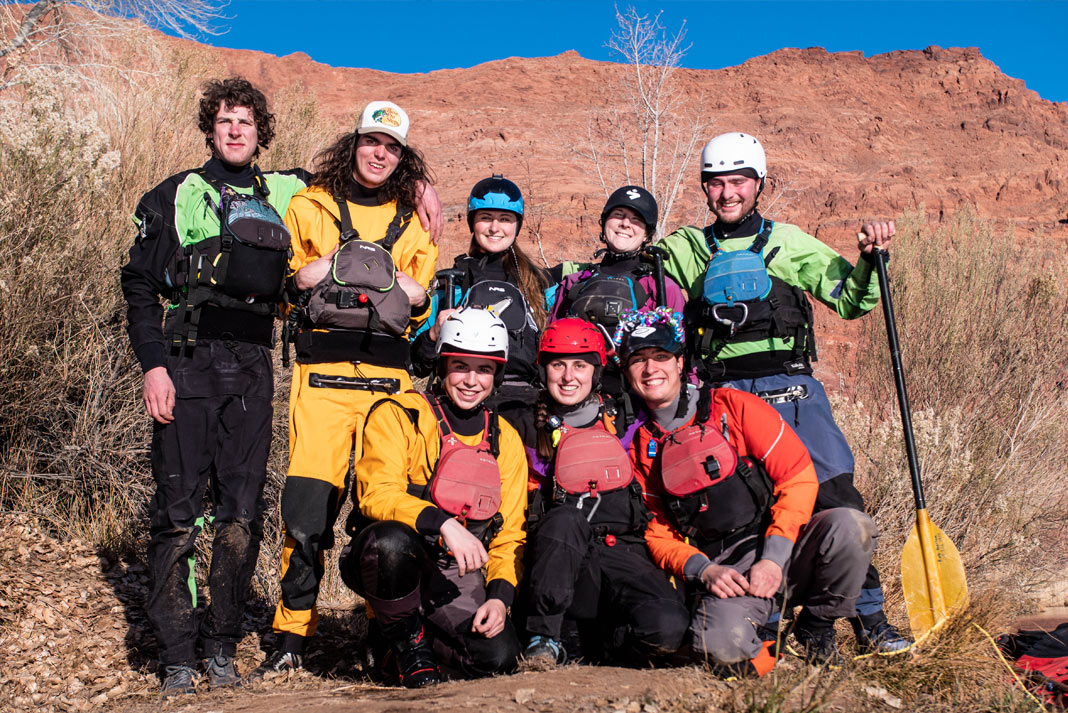
Yet, my feelings changed during our first week on the river. I am grateful for the strict regulations and difficulty of obtaining a permit. Standing with my toes touching the ethereal water of the Little Colorado, my mind wanders back to the past seven nights on the river. Each camp has been pristine. While sandy footprints leave hints of others’ river travels, there is not one fire ring, plastic wrapper or stray piece of toilet paper revealing the people who have gone before us.
Taking on the rapids
Downstream, we catch sight of a raft group breaking camp after breakfast. As we wave and cheer, they watch in confusion while our raft-less group disappears over the horizon of Unkar Rapid. Sunshine blinds me, revealing little other than sparkling waves bouncing off the cliff face. As we crest a wave, I feel the bow jerk out from beneath me. Thigh straps press against my legs, keeping paddler and canoe connected. I look up to see the bluebird sky replaced by a towering wall of frothing water looming over my head. I tuck my face towards my chest just as the wave flattens me to the deck of our canoe. I feel the impact of reconnecting with the seat, and then air on my face again. I scramble for an inhale, blow water out of my nose. We’re upright!
The boat shifts back to flat, and I turn around for a paddle high five and see Caleb’s grin matching mine. We meet the other paddlers in the eddy and help each other empty our loaded tripping canoes. This teamwork becomes the cornerstone of our trip: there is no space for ego on the Grand Canyon. The river and the weather keep us humble day after day.
Winter shade creeps into the canyon, and often we jump around to warm up after the splashes soak us. This is the reality of a winter Grand Canyon trip. Despite the perpetual chase for sunlight, a winter permit boasts the advantage of longer permit lengths, campfires and the river less traveled.
In 2019, more than 640 commercial trips launched between April and October, but winter months are reserved for noncommercial trips. Otherwise, paddlers have to share the river with loud motor rigs, not to mention poisonous critters, such as scorpions and snakes. For us Canadians, the thought of poisonous bugs is scarier than the cold whitewater and constant shade.
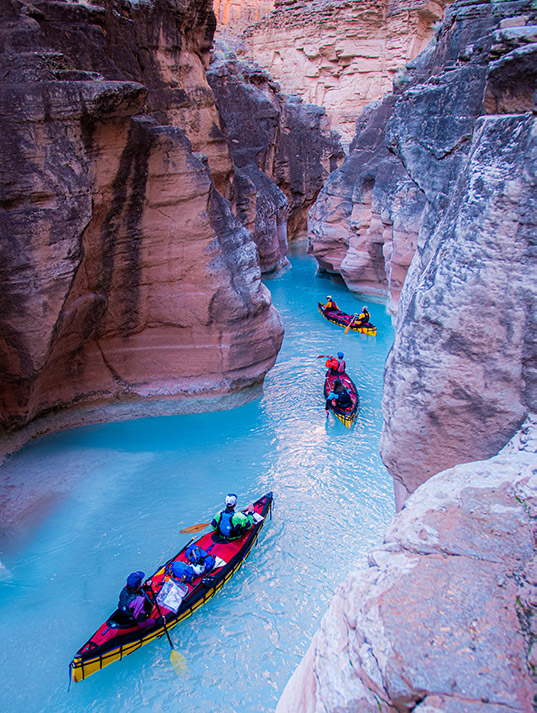
Unkar’s wave is foreshadowing of what’s to come. There’s a rapid waiting for us downstream, and it’s a famous one. Hance is an eight on the Grand Canyon’s 10-grade rapid classification scale. We scout from a goat path high up on a cliff. Christian reassures us it will “look small, feel big, and go well.”
Forty-five minutes later, Christian’s head is barely visible amongst the frothing, churning, white boils, as he floats beside his upside-down canoe. Indeed, Hance did look small and feel big—but could have gone better. After flipping following a mega stern tap in a huge wave, Christian and his paddling partner, Alex, climb on the overturned canoe, steering it through the remainder of the rapid. It’s not until they get to shore we notice the gash clean through the Royalex, from skid plate to gunwale. Two hours later, we’ve sewn it back up with wire and sealed it with gorilla tape, and we’re on our way again. There’s a lot of pride about the repair, but I feel a collective sense of dread—there are still 100 rapids to come in the next 17 days.
This feeling is hammered home by the six miles and the grade eight rapid remaining between us and the next campsite. With trepidation, we approach Sockdolager. It boasts the most foreboding horizon line we’ve ever seen, and one of the biggest waves any of us have ever hit in a tandem canoe. With two boats thoroughly swamped, everyone resurfaces downstream upright and full of relief. A few minutes later, we spot the small sandbar and land at our campsite and our home for a much-needed layover day.
With jubilation, we crack open celebratory brie and crackers, while the roar of our next rapid rings through our campsite. For the next 48 hours, the Mordor-like horizon line ominously frames the end of our sandbar. In the meantime, we pour celebratory whiskey and cheers to the epic day. We are, after all, on a personal trip.
A paddling guide’s vacation
“I’m not getting paid!” is a common exclamation. With half the group working as paddling guides, most of us would say we have our dream job. However, there is a certain amount of glee from bailing on hiking plans to drink another cup of coffee. Or watching the sun filter down the canyon walls without getting out of bed. On multiple occasions, I catch myself curling my toes into the sand near the fire, savoring the sinful feeling of bare feet in a campsite. For most of us, it was our first personal canoe trip in five or even 10 years. These are sacred moments.
Over the next two weeks, daily routines become familiar. Everyone is at home with each other and our systems. The wrinkles are ironed out through trial and error, confidence builds through day after day of whitewater, and we are used to having perpetually sore necks from staring up at mile after mile of red canyon walls.
We’ve celebrated Jérôme and Alex’s 21st birthdays, and I giggle internally every time I realize they had their first legal U.S. drink in the Grand Canyon. Nerves ease off, but nobody’s thinking about the end yet. It’s the golden age of any river trip—when living outdoors has become comfortable, and I’m no longer bothering to count how many more times I have to poop in a tube.
Some days we only catch a glimpse of a raptor flying high in the sky, and other days we admire big horned sheep scampering along the riverbank. A ranger said the sheep were here, but that we wouldn’t see them. We saw more than 30 and wonder if the absence of loud, often rowdy raft culture was responsible. Sometimes we cheer elatedly and sometimes we float in silence, a comfortable ebb and flow of moods.
We scout as we would on any river, each rapid a new puzzle. As I examine the angle of each wave, contemplating the push of the current, I find myself forgetting there are thousands of feet of canyon walls above us, hundreds of years of history under our feet, and one of the most sought-after river trips stretching ahead of us.
Despite puzzling over wave angles and current direction, impromptu line changes and fun-seeking improvisation cause two boats to go over in Crystal, bringing the capsize count up into the double digits, and the tally of self-rescues along with it. By now, our self-rescue technique is refined.
Nearing the end
On day 20, we paddle through the famed Lava Rapid. Its reputation precedes it by a hundred miles. Jabbering and cracking jokes nervously, all four boats have clean lines, although Christian and Alex gleefully smash through the meat of the largest waves. We speculate it might not have been an accident.
Soon after catching our breath, we steer the canoes towards a sandy beach. “I see a human!” I exclaim. Indeed, a day hiker is just getting ready to head back to the canyon rim, where he has been camping in his Jeep. This is only the second place since the put-in where day hikers can access the bottom of the canyon. He asks how our trip is going and we stumble over our words, blubbering about the famous rapid we had just navigated. His stoke levels don’t come close to matching ours.
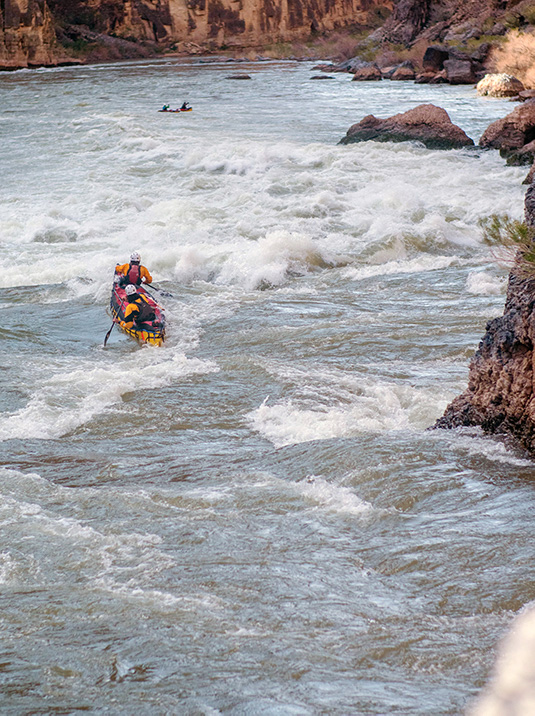
“He just doesn’t get it,” I think to myself as he walks away. Looking around, I’m reminded these seven people get it. The rafters downstream, the kayakers upstream and the canoeists all across the country, they get it. These river people who put so much effort into obtaining permits, and the advocates who develop the regulations, they get it too. Candy wrappers scattered on the beach—the first piece of litter all trip—is a sign of people who don’t.
For 25 days, waves thundered off red cliffs. Paddlers and rafters cheered, firewood crackled and joyful whistles echoed off canyon walls. Now, an unfamiliar new sound.
The drone of the first helicopter is quickly followed by more. Little did we know from this point on the river until the silt flats, there would be at least seven helicopters in our field of vision at all times. We watch them touch down, shuffle tourists on and off a photography platform and take off, just as the next chopper comes in for a landing. It’s hard to believe these people will have a five-minute memory of what we had just experienced for nearly a month.
My mind shifts back to the strict regulations and 30,000 people who get to travel down the river each year. Maybe it’s a good thing helicopters allow these non-river people to experience this place without leaving footprints in the canyon, even if it’s only for an instant. While the idea of spending only five minutes here horrifies our group, maybe the sight of the red walls will help others feel the grandeur and humility of humans in nature. Maybe in their own way, they will get it. People protect the places they love.
I look back to see the canyon walls fall away behind us. Our eyes struggle to take in the newfound expanse of sky. For more than three weeks, red cliffs have consistently framed the edges of our vision. Our necks all have matching knots in them, from staring up at the sandstone castles and amphitheaters cutting through the sky above us, tier after tier. We cross the last defined canyon ridge, and it reminds me of driving out of the mountains and into the prairies. The river begins to slow, and we enter the silt flats. Deposited by the flooded Lake Mead as a result of the Hoover Dam, it’s impossible not to stare upward, as 40-foot-tall silt banks tower over us, where rapids used to roar.
We float towards the take-out in the late afternoon sun, savoring the simple feeling of gentle current swirling underneath our canoe.
“As lovely as this is, could we start paddling toward the take-out? I have to poop!” Try as we may, toilet talk remains the overarching theme of the trip. Leave it to Margaret to give us closure and end the trip in such a fitting way.
Willa Mason is a Paddle Canada Instructor Trainer, and her tales of the canyon come to us from the home office of her minivan camper named Stan. You may have heard of her grandfather.



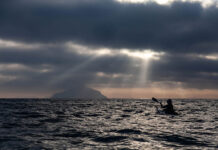
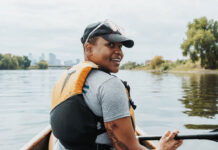
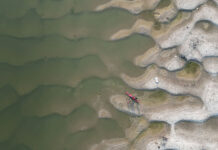
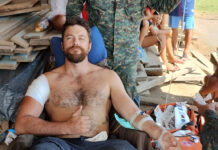
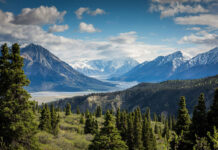

Thanks Willa, for sharing your life with those of us who stand merely in your shadow.